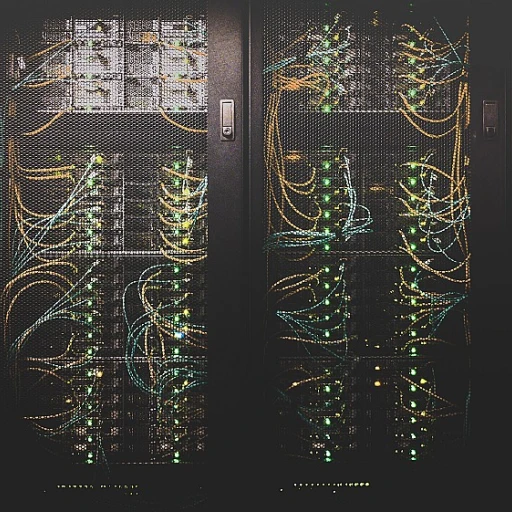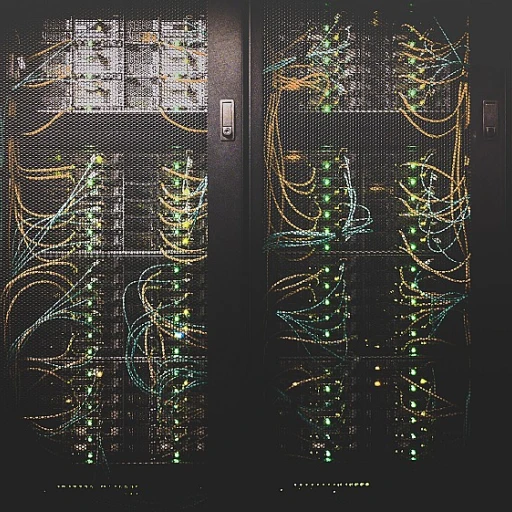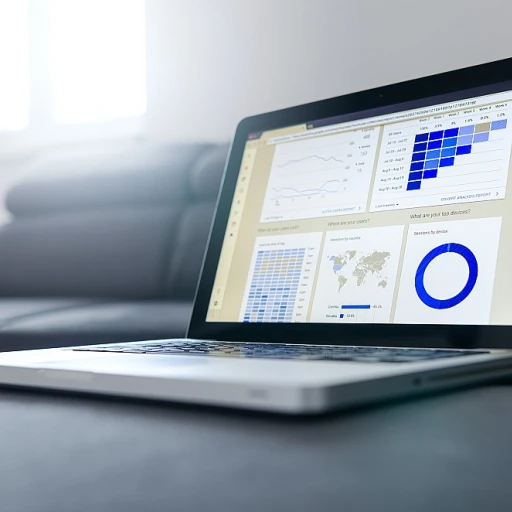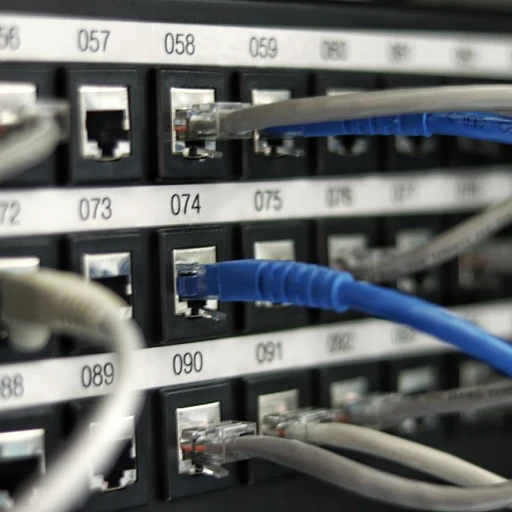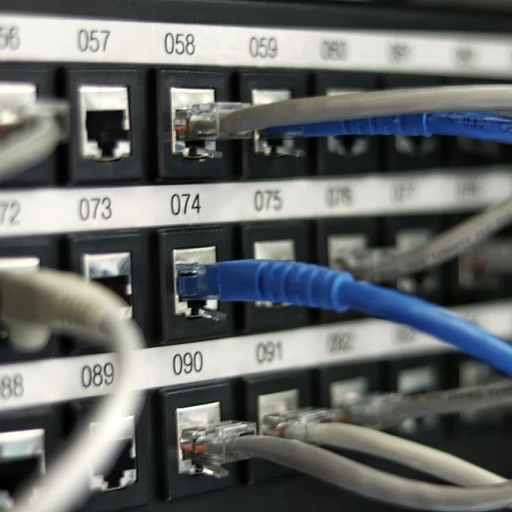
Understanding Peer-to-Peer Technology in Supply Chains
Decoding the Role of Peer-to-Peer Technology
Peer-to-peer (P2P) technology is transforming the landscape of supply chain management by decentralizing processes and enhancing efficiency. Unlike traditional centralized systems, P2P networks distribute tasks across multiple nodes, allowing for real-time visibility and greater flexibility in managing supply chain activities. This shift is particularly impactful in procurement and payment processes, where speed and accuracy are crucial.
Enhancing Procurement and Payment Processes
Incorporating P2P technology into supply chains can streamline procurement activities by facilitating direct interactions between buyers and suppliers. This can lead to more efficient purchase order management and improved supplier relationships. Additionally, P2P systems can optimize invoice processing and payment processing, reducing the time and effort required for accounts payable tasks. By leveraging P2P networks, organizations can achieve greater compliance and efficiency in their procurement cycle.
Real-Time Visibility and Supplier Relationships
One of the standout benefits of P2P technology is its ability to provide real-time visibility into the procurement process. This transparency allows organizations to monitor the status of goods and services, ensuring timely delivery and payment. Moreover, enhanced visibility can strengthen supplier relationships by fostering trust and collaboration. As organizations procure goods and services more efficiently, they can better manage their supply chains and improve overall performance.
For more insights on how P2P technology is shaping online solutions, explore our article on exploring the potential of XXTech in online blockchain solutions.
Benefits of P2P in Supply Chain Management
Enhancing Efficiency and Reducing Costs
Peer-to-peer (P2P) technology is transforming supply chain management by enhancing efficiency and reducing costs. By decentralizing processes, organizations can streamline procurement activities, leading to significant improvements in the procurement cycle. This technology allows for real-time visibility into the procurement process, enabling organizations to manage their supply chains more effectively.
Improving Supplier Relationships
One of the key benefits of P2P technology is its ability to improve supplier relationships. By facilitating direct communication and transactions between suppliers and buyers, P2P systems enhance transparency and trust. This leads to better compliance with procurement processes and strengthens supplier relationships, ultimately benefiting the entire supply chain.
Streamlining Payment Processes
P2P technology also streamlines payment processing, making it more efficient and less prone to errors. By automating the pay cycle, organizations can reduce the time and resources spent on accounts payable and invoice processing. This not only speeds up the payment process but also ensures timely payments to suppliers, fostering a more reliable supply chain.
Enhancing Procurement Software Capabilities
With the integration of P2P technology, procurement software becomes more robust, offering enhanced capabilities for managing purchase orders and payment processing. This leads to improved procurement management, allowing organizations to better handle the complexities of procure-to-pay processes. For more insights on the costs associated with developing such advanced systems, you can explore understanding the cost of developing blockchain applications.
Boosting Organizational Efficiency
Ultimately, the adoption of P2P technology in supply chains boosts organizational efficiency. By optimizing procurement processes and ensuring seamless processing of goods and services, organizations can achieve greater operational efficiency. This not only reduces costs but also enhances the overall performance of the supply chain, making it more resilient and adaptable to changing market conditions.
Challenges and Considerations
Addressing the Complexities of Integration
Implementing peer-to-peer (P2P) technology in supply chains is not without its challenges. One of the primary hurdles is integrating P2P systems with existing procurement software and processes. Organizations often rely on legacy systems for procurement activities, and transitioning to a decentralized model requires significant adjustments. Ensuring seamless integration with current procurement processes, such as purchase orders and invoice processing, is crucial for maintaining efficiency and compliance.
Managing Supplier Relationships and Compliance
Another challenge is managing supplier relationships within a P2P framework. Traditional supply chain management relies heavily on centralized control, which can complicate the shift to a decentralized approach. Organizations must ensure that all suppliers are on board with the new system and that compliance with procurement cycle regulations is maintained. This involves re-evaluating supplier agreements and ensuring that all parties understand the new pay process and procurement activities.
Ensuring Real-Time Visibility and Efficiency
Real-time visibility is a significant advantage of P2P technology, but achieving it can be challenging. Organizations must invest in robust pay software that supports real-time data processing and payment processing. This requires a comprehensive understanding of the procurement process and the ability to adapt to new technologies quickly. The goal is to enhance the efficiency of accounts payable and procurement cycles, ensuring that goods and services are procured and paid for promptly.
Overcoming Payment Processing Challenges
Payment processing within a P2P system can be complex. Organizations need to ensure that their payment supplier systems are capable of handling decentralized transactions efficiently. This involves upgrading existing payment processing systems to accommodate the new P2P model, ensuring that the pay cycle is streamlined and that payment processing is both secure and efficient.
For more insights on how technology is transforming traditional processes, you might find this article on how augmented reality is transforming accounting practices insightful.
Case Studies: Successful P2P Implementations
Real-World Examples of P2P in Action
Peer-to-peer (P2P) technology is making waves in supply chain management, offering innovative solutions to age-old problems. Several organizations have successfully implemented P2P systems, transforming their procurement processes and enhancing efficiency.
Streamlining Procurement with P2P
One notable example is a leading global retailer that integrated P2P technology to optimize its procurement cycle. By leveraging real-time data and decentralized networks, the company improved its purchase order management, ensuring seamless order processing and payment cycles. This shift not only enhanced supplier relationships but also reduced the time visibility gap in procurement activities.
Enhancing Supplier Relationships
Another case involves a multinational manufacturing firm that adopted P2P software to streamline its accounts payable processes. By automating invoice processing and payment processing, the organization achieved greater compliance and efficiency. The P2P system facilitated better communication with suppliers, ensuring timely payments and fostering stronger supplier relationships.
Improving Compliance and Efficiency
A third example is a logistics company that utilized P2P technology to enhance its procurement software capabilities. The company focused on improving its procure-to-pay cycle, integrating P2P solutions to manage goods and services procurement more effectively. This implementation resulted in improved compliance with procurement regulations and increased overall efficiency in procurement management.
These case studies highlight the transformative potential of P2P technology in supply chain management. By addressing challenges in procurement processes and enhancing supplier relationships, organizations can achieve significant improvements in efficiency and compliance.
Future Trends in Supply Chain P2P
Emerging Trends in Peer-to-Peer Supply Chain Technology
The future of supply chain management is being reshaped by peer-to-peer (P2P) technology, promising to enhance efficiency and transparency. As organizations continue to seek ways to optimize their procurement processes, several key trends are emerging that will define the next phase of P2P technology in supply chains.
Real-Time Data and Enhanced Visibility
One of the most significant trends is the integration of real-time data processing capabilities. This advancement allows organizations to gain immediate insights into their supply chain activities, from procurement to payment processing. Real-time visibility into purchase orders and invoice processing enables better decision-making and enhances supplier relationships by ensuring timely payments and compliance with procurement cycles.
Automation and AI in Procurement Activities
Automation, powered by artificial intelligence, is increasingly being adopted to streamline procurement activities. AI-driven procurement software can automate routine tasks such as order processing and accounts payable, reducing manual errors and increasing efficiency. This shift not only speeds up the procurement process but also allows procurement managers to focus on strategic activities that add value to the organization.
Decentralized Networks for Enhanced Security
Decentralization is another trend gaining traction, with P2P networks offering enhanced security and resilience. By distributing data across multiple nodes, organizations can protect sensitive information related to supplier relationships and payment processes. This approach minimizes the risk of data breaches and ensures compliance with industry standards.
Integration with Blockchain Technology
Blockchain technology is becoming an integral part of P2P supply chain solutions. By providing a secure and transparent ledger for transactions, blockchain enhances trust between parties and streamlines the procure-to-pay cycle. This integration supports efficient invoice processing and payment supplier activities, ensuring that all parties have access to accurate and up-to-date information.
Focus on Sustainability and Ethical Sourcing
As organizations become more conscious of their environmental impact, there is a growing emphasis on sustainability and ethical sourcing within supply chains. P2P technology facilitates this by providing detailed insights into the origin and journey of goods and services. This transparency helps organizations make informed decisions that align with their sustainability goals and improve supplier compliance.
In conclusion, the future of P2P technology in supply chains is bright, with numerous opportunities for organizations to enhance their procurement processes. By embracing these trends, companies can achieve greater efficiency, security, and sustainability in their supply chain management.
Steps to Implement P2P in Your Supply Chain
Initiating the Transition to P2P
Implementing peer-to-peer (P2P) technology in your supply chain can significantly enhance efficiency and supplier relationships. Begin by evaluating your current procurement processes and identifying areas where P2P can streamline operations. Consider how P2P can improve order management, payment processing, and real-time visibility of goods and services.
Choosing the Right Software
Selecting the appropriate procurement software is crucial. Look for solutions that integrate seamlessly with your existing systems and offer comprehensive features for managing purchase orders, invoice processing, and accounts payable. The right software should facilitate compliance and enhance the overall procurement cycle.
Engaging Stakeholders
Engage key stakeholders, including procurement teams, suppliers, and IT departments, to ensure a smooth transition. Effective communication and collaboration are essential for aligning goals and expectations. This engagement will help in addressing any concerns related to the pay process and supplier relationships.
Training and Support
Provide training sessions for your team to familiarize them with the new P2P processes and software. Continuous support is vital to address any challenges that may arise during the transition. This will ensure that your organization can fully leverage the benefits of P2P technology.
Monitoring and Optimization
Once implemented, continuously monitor the performance of your P2P system. Analyze data to identify areas for improvement and optimize processes for greater efficiency. Regular reviews will help in maintaining compliance and enhancing the procurement process over time.
Building Strong Supplier Relationships
Finally, focus on strengthening supplier relationships through transparent communication and efficient payment cycles. A robust P2P system can facilitate better collaboration and trust, ultimately leading to a more resilient supply chain.








